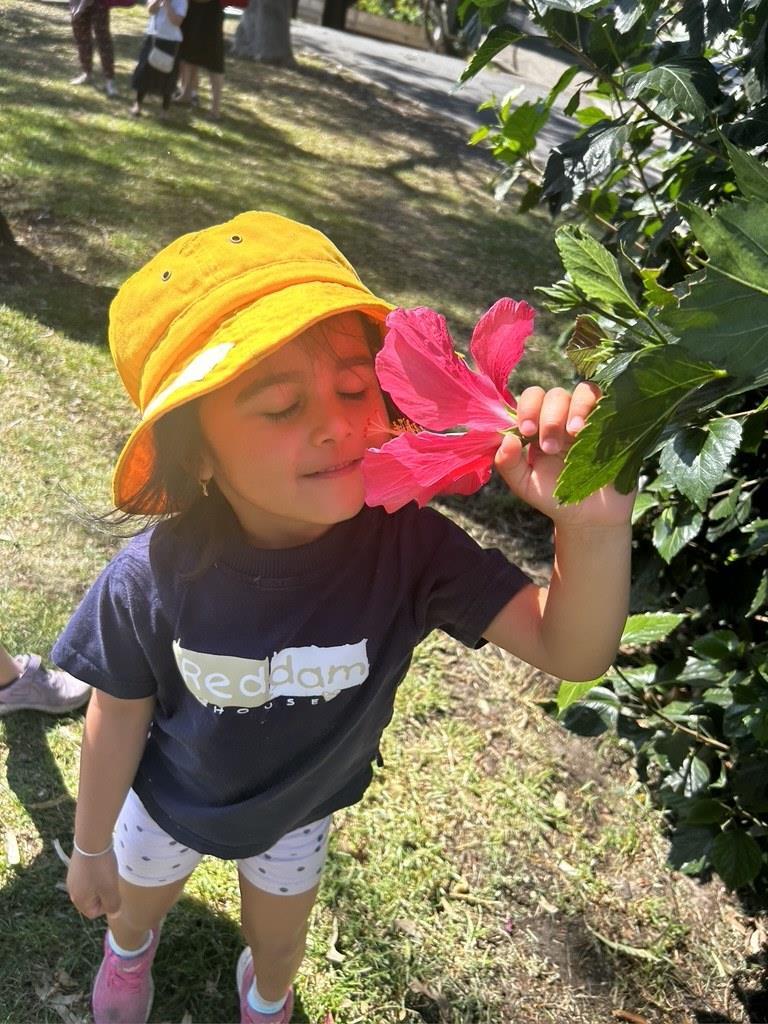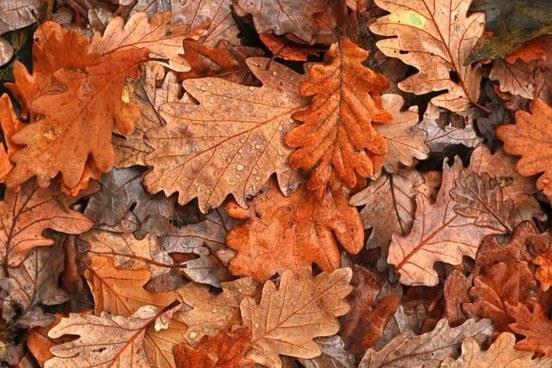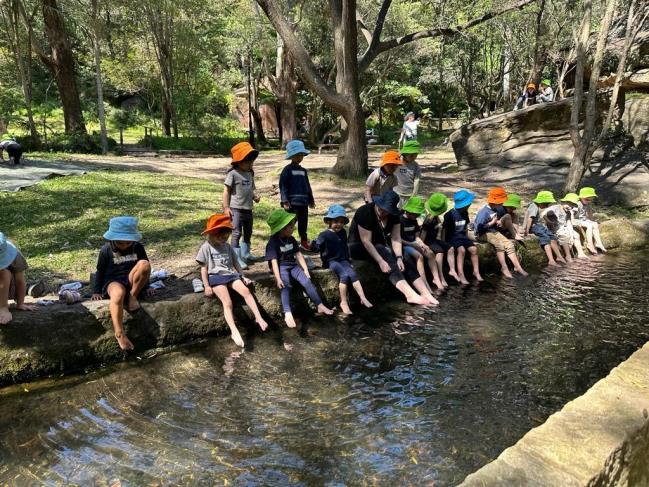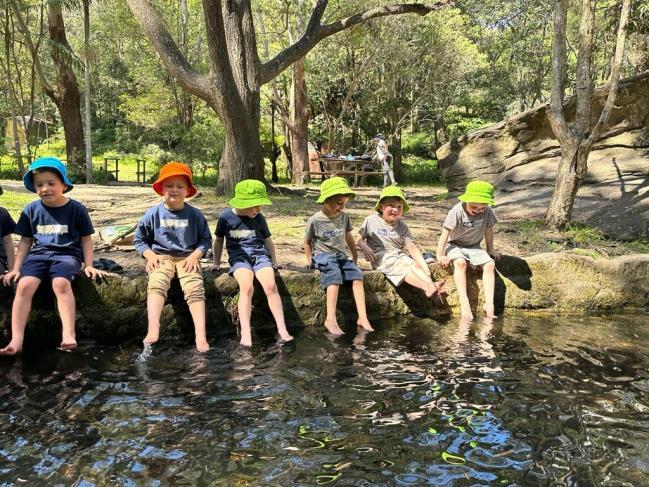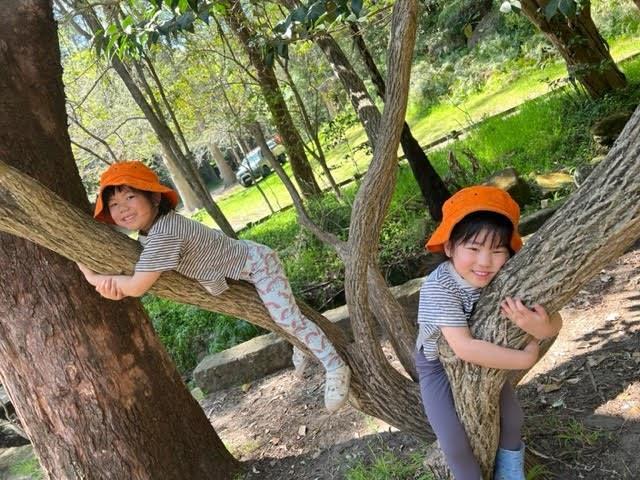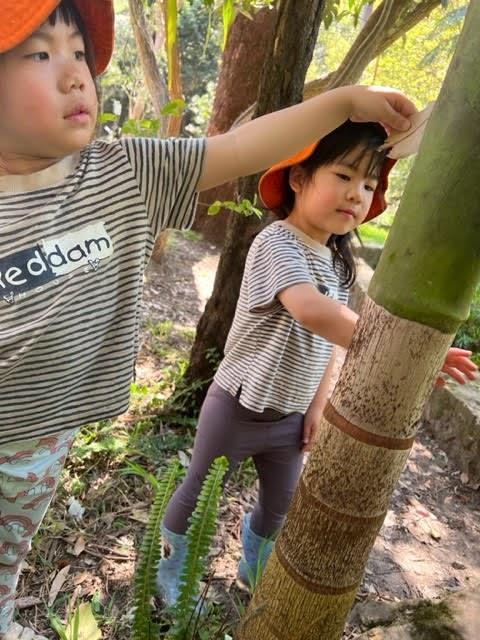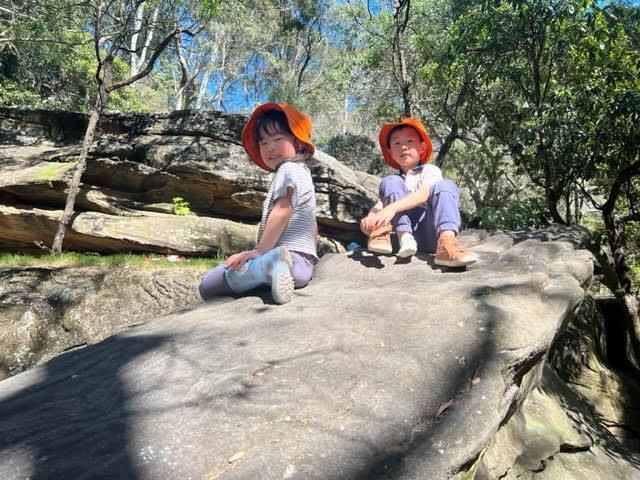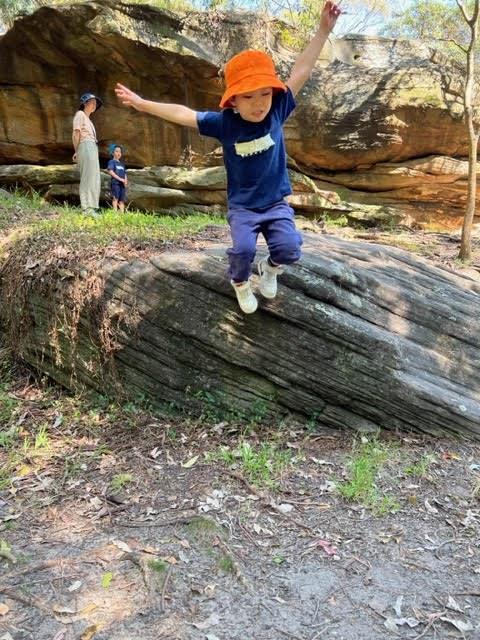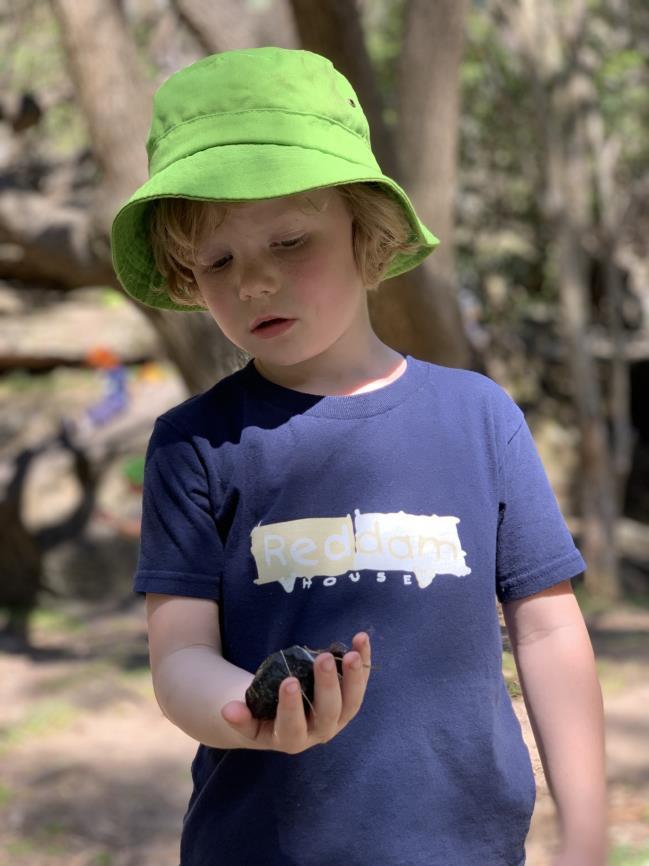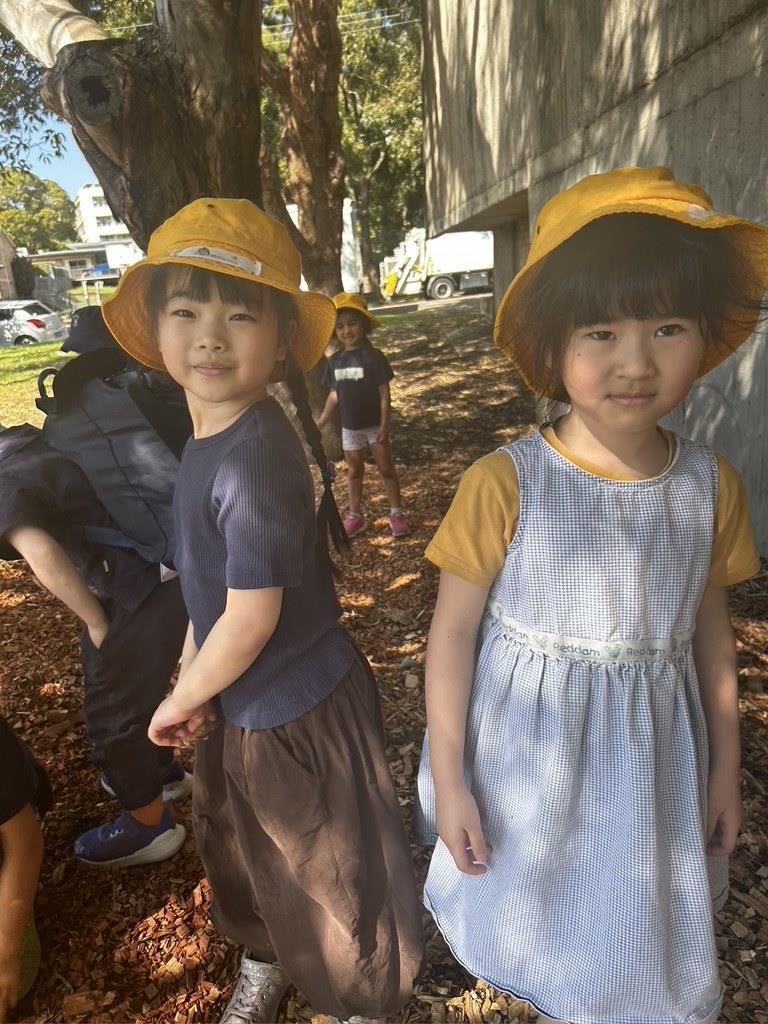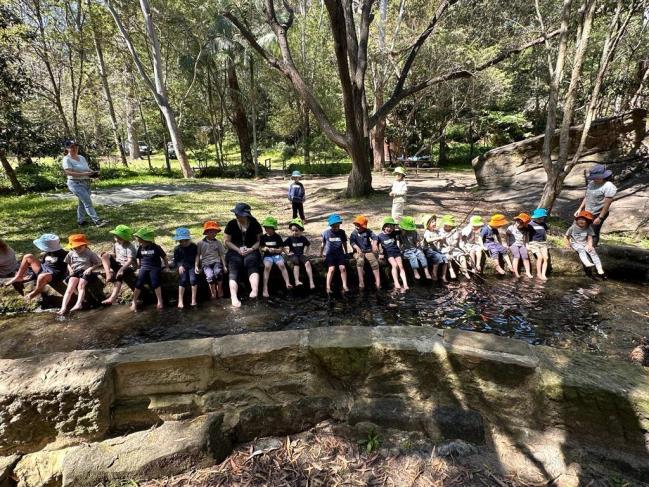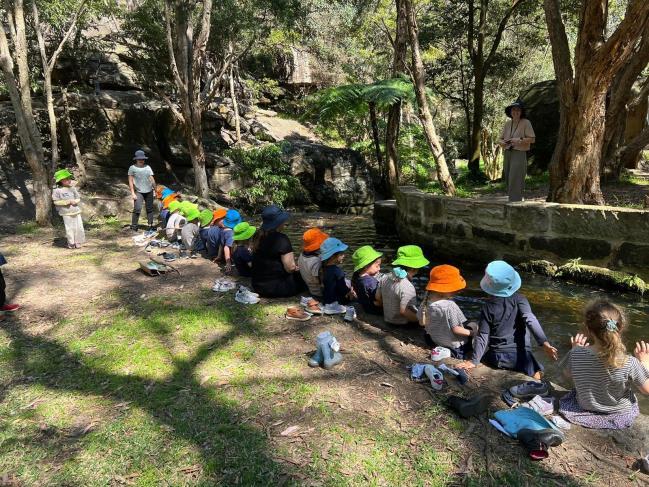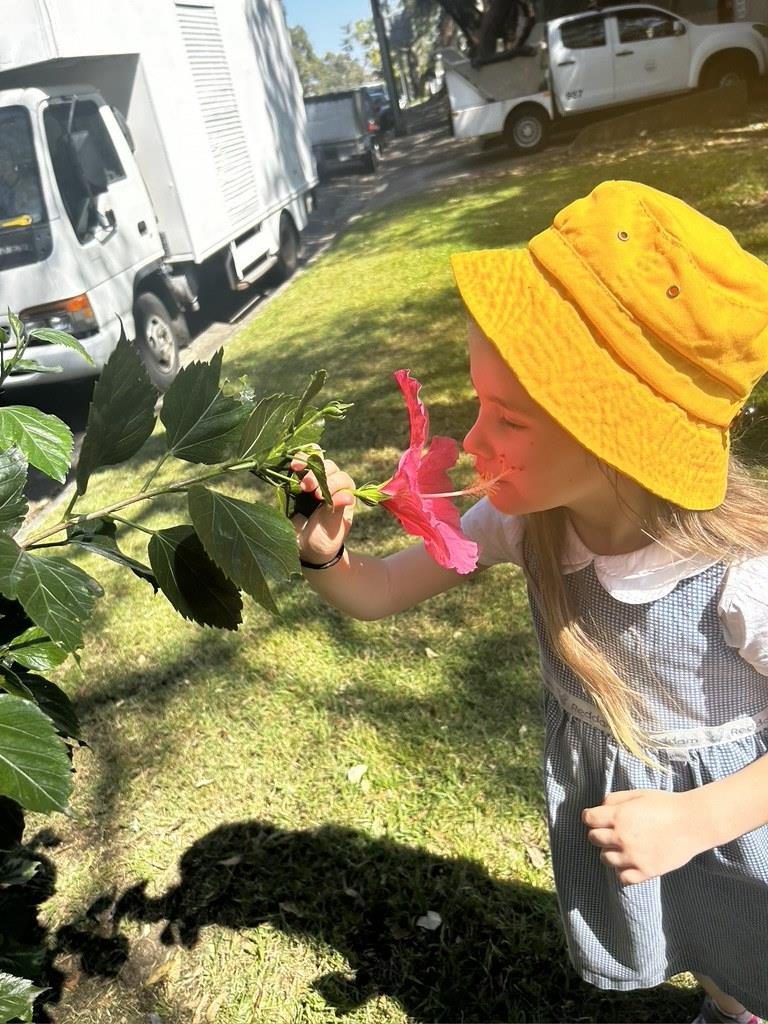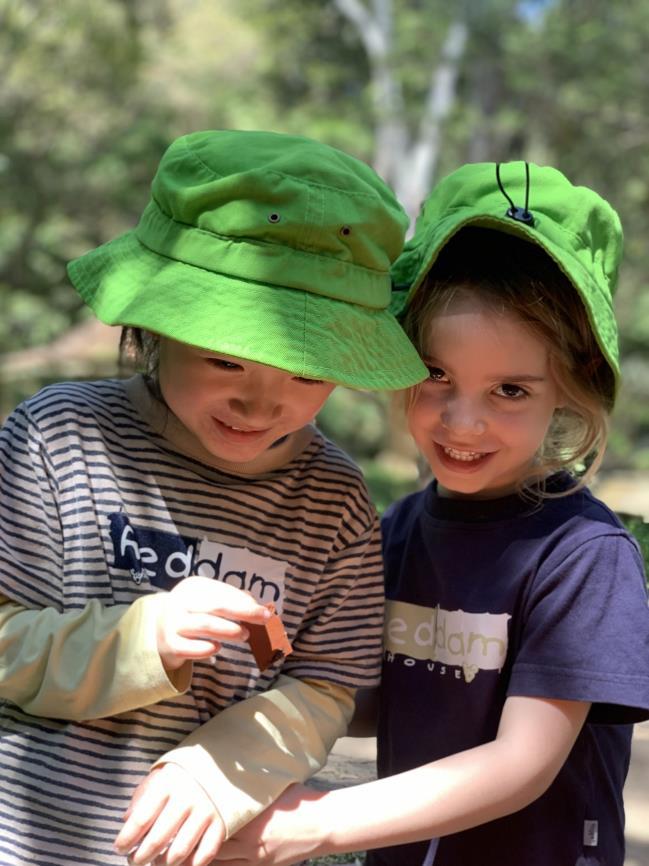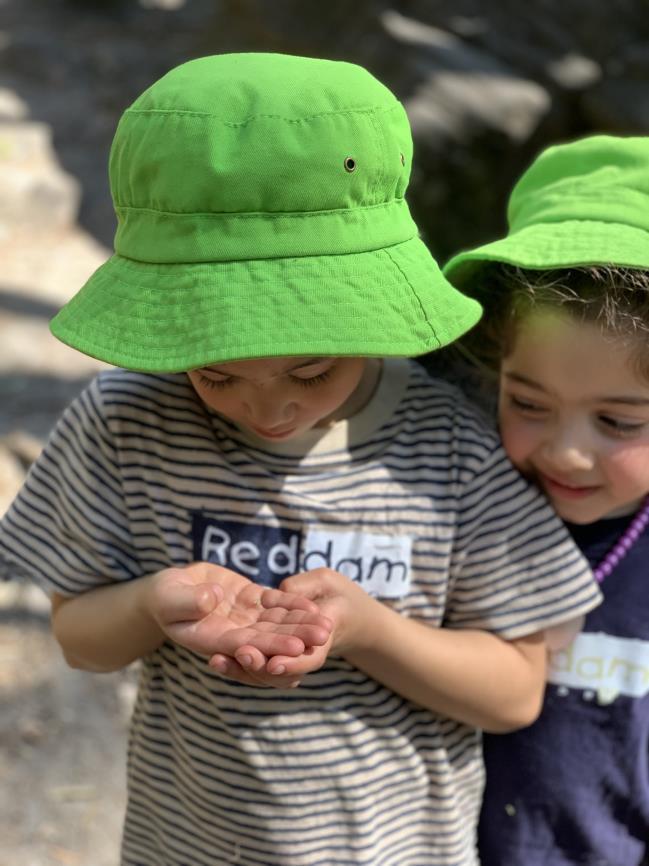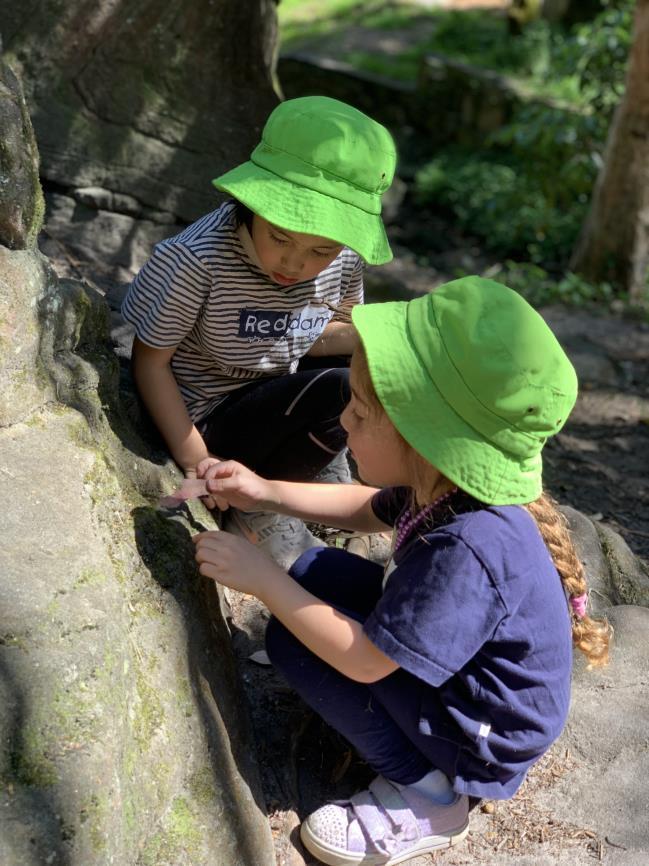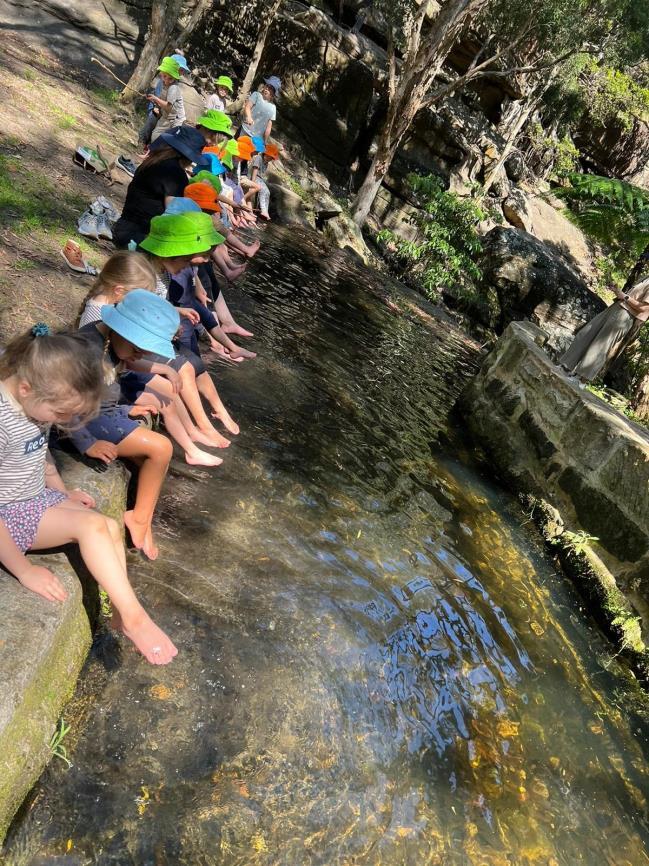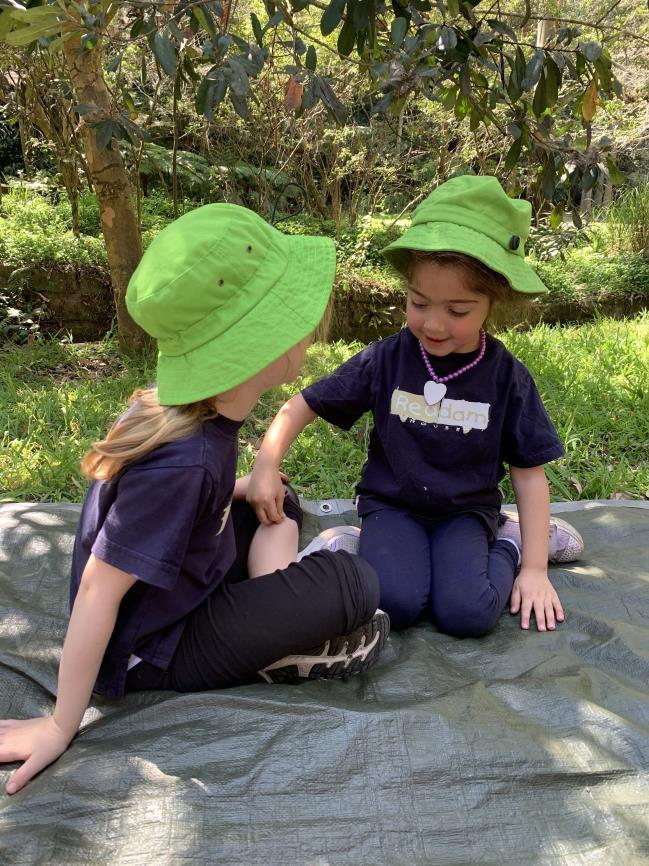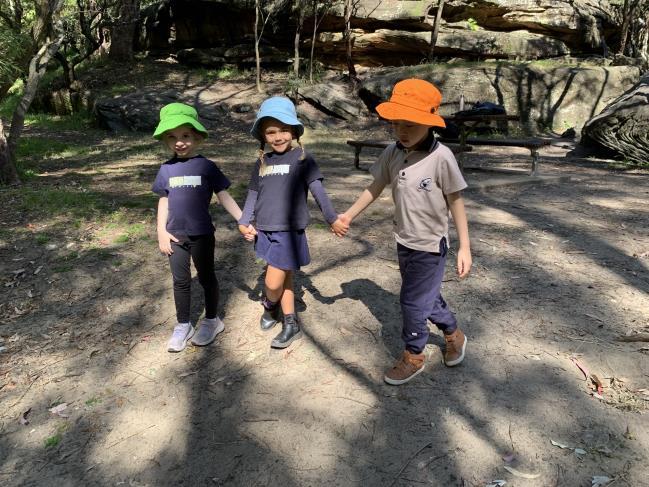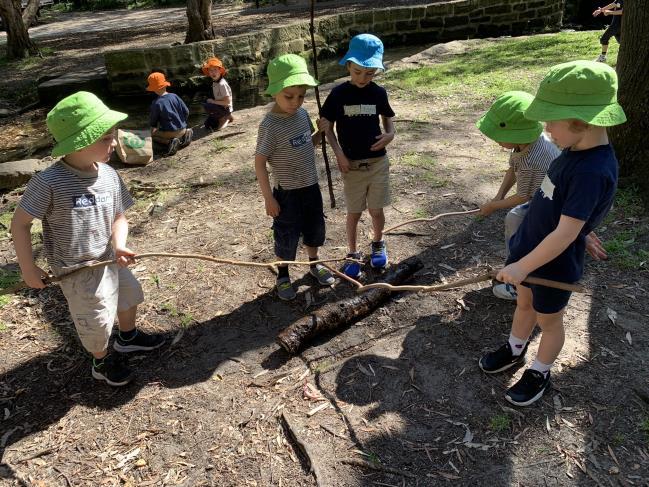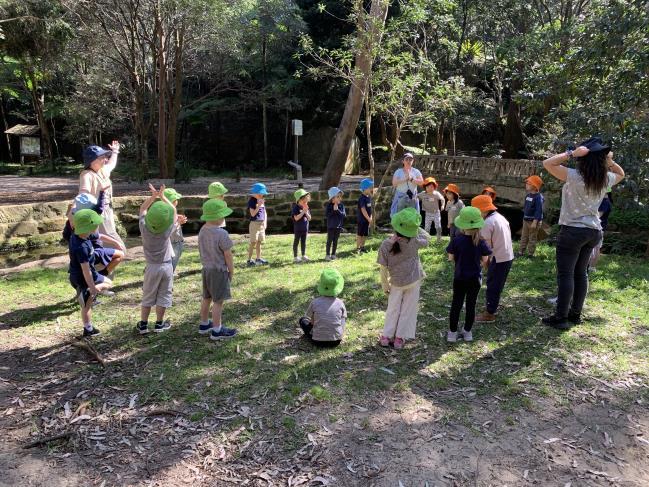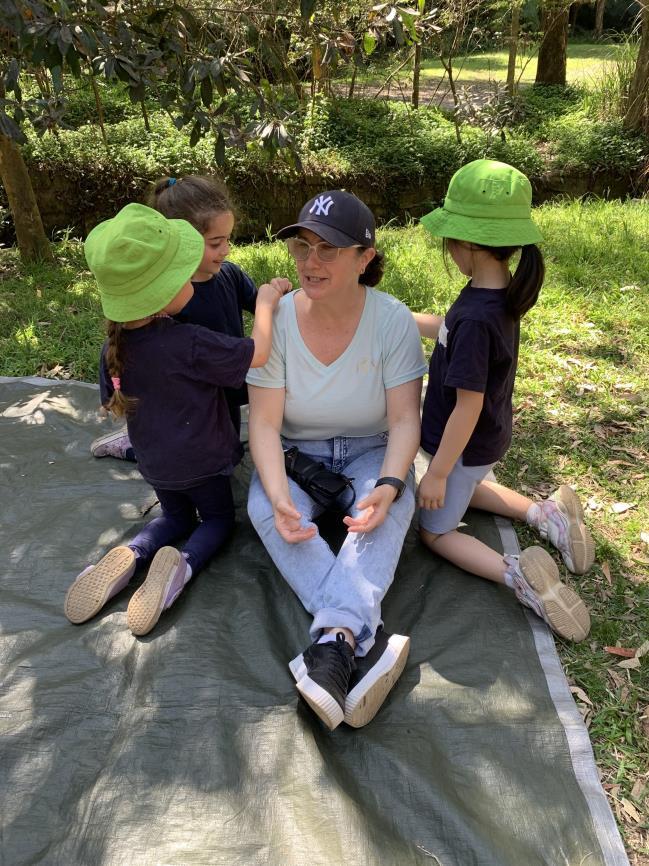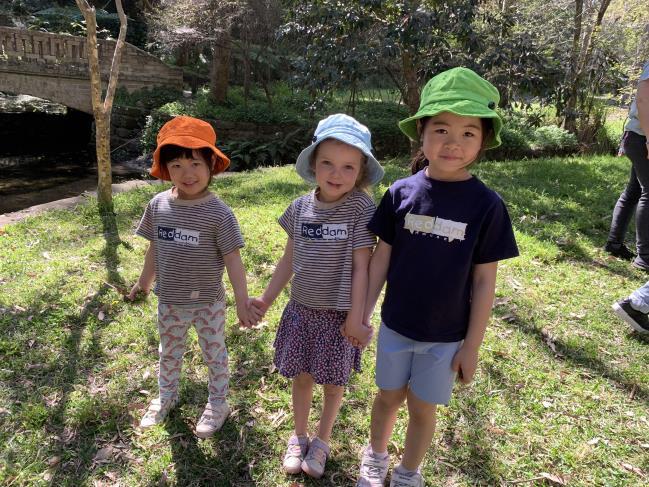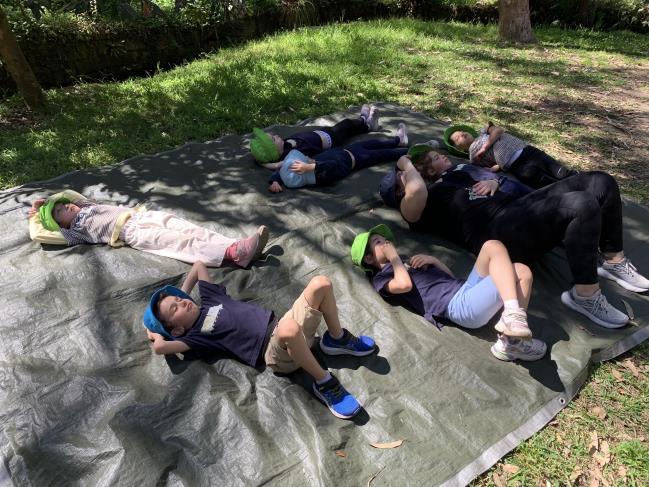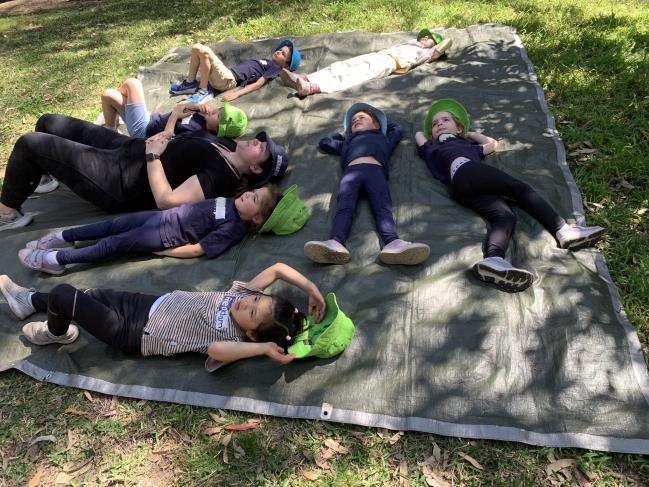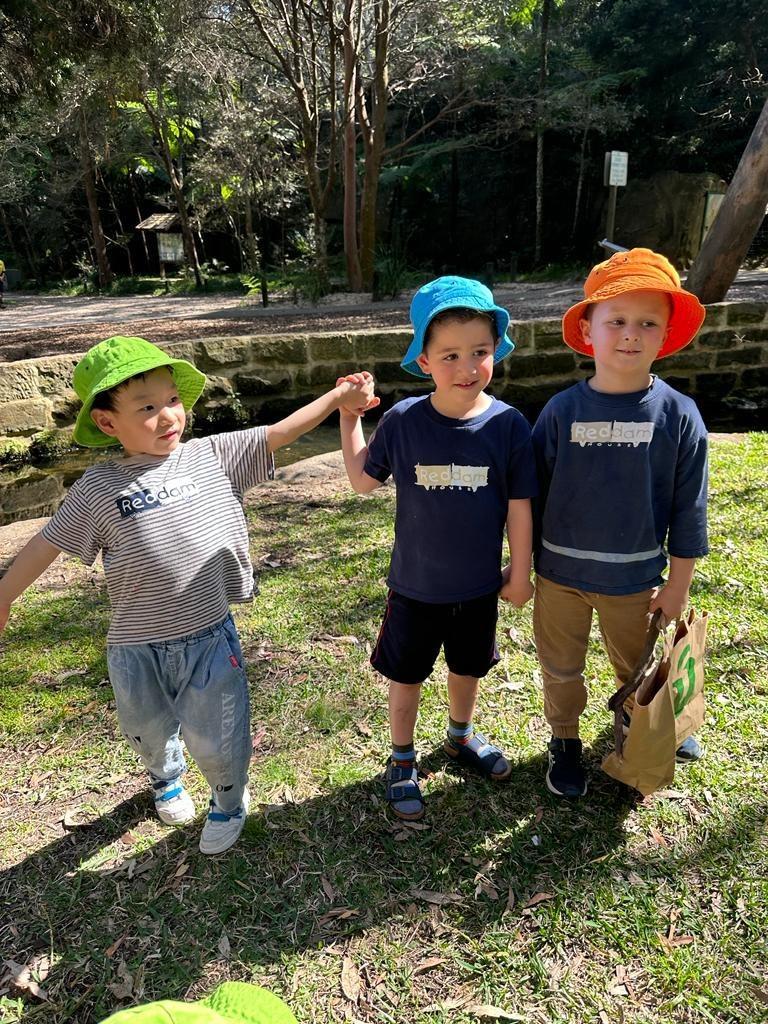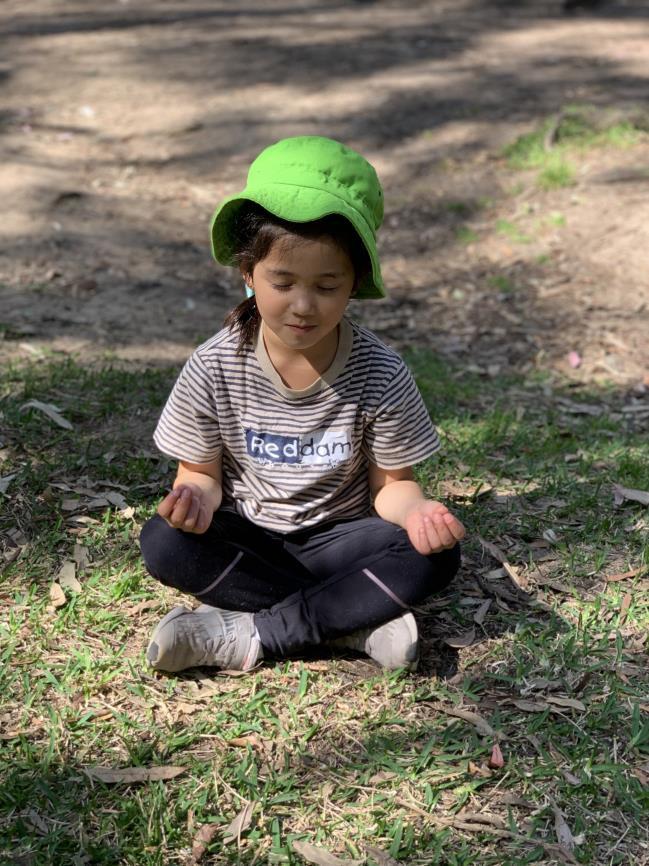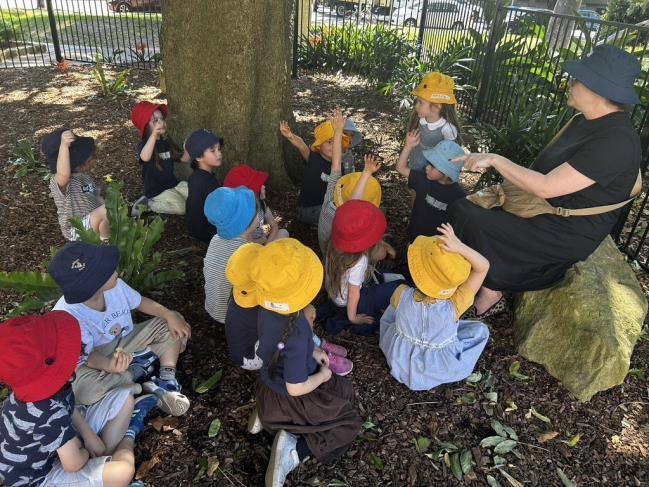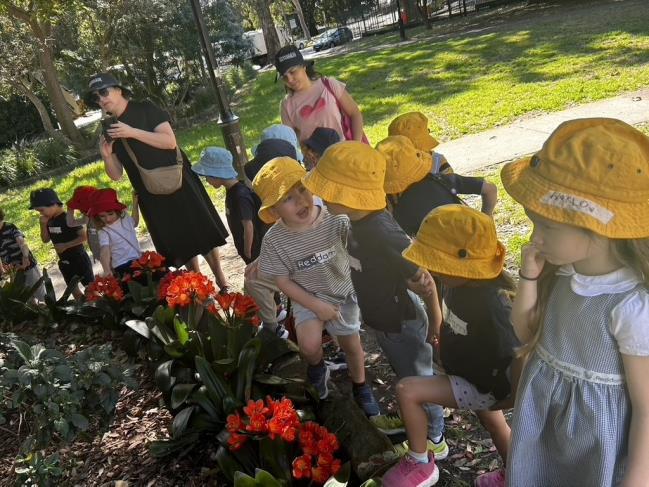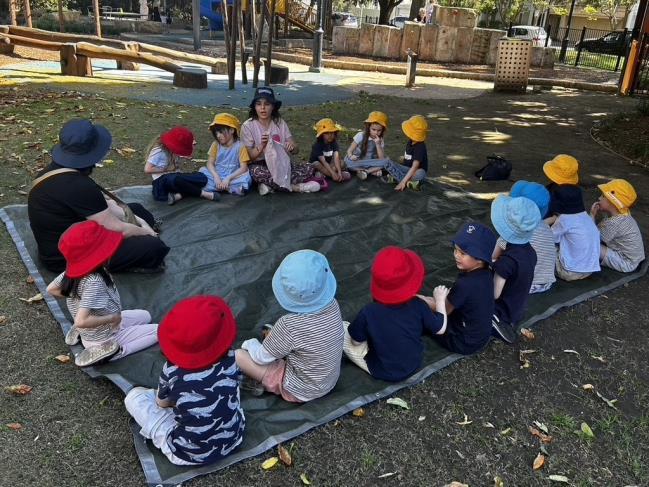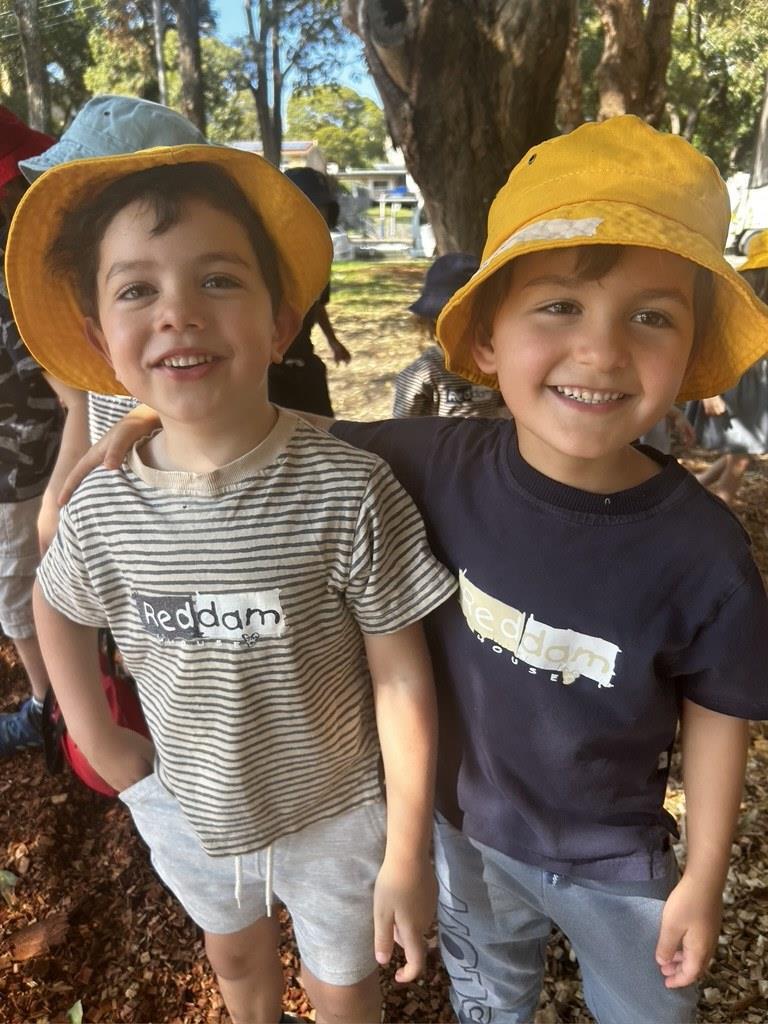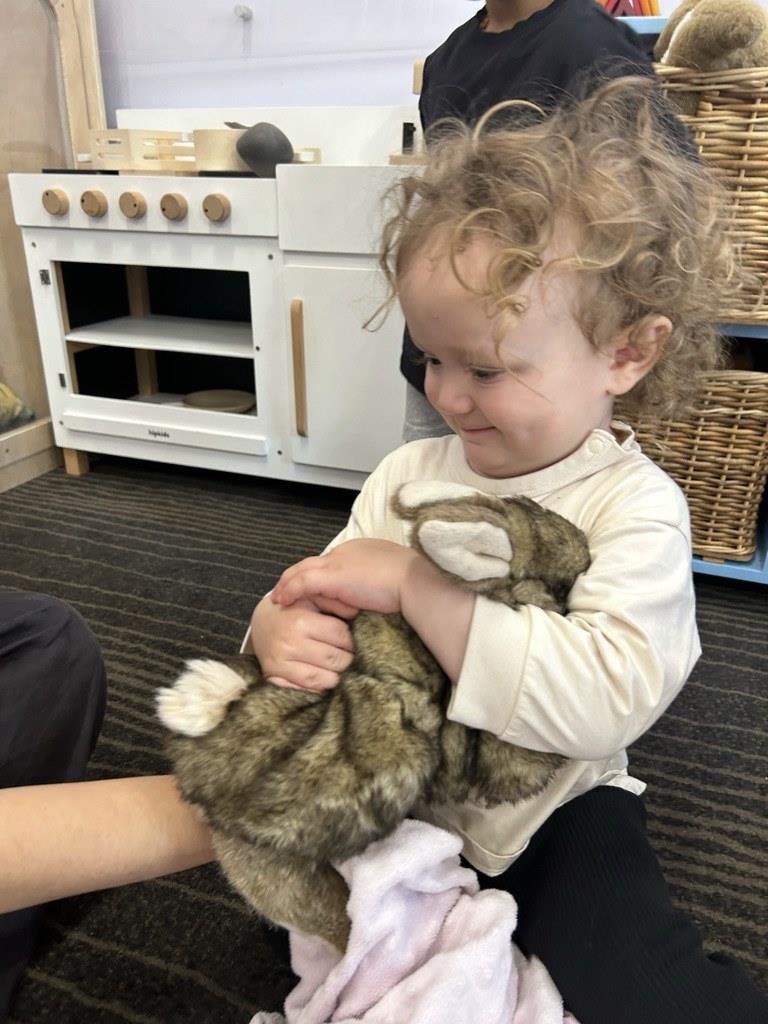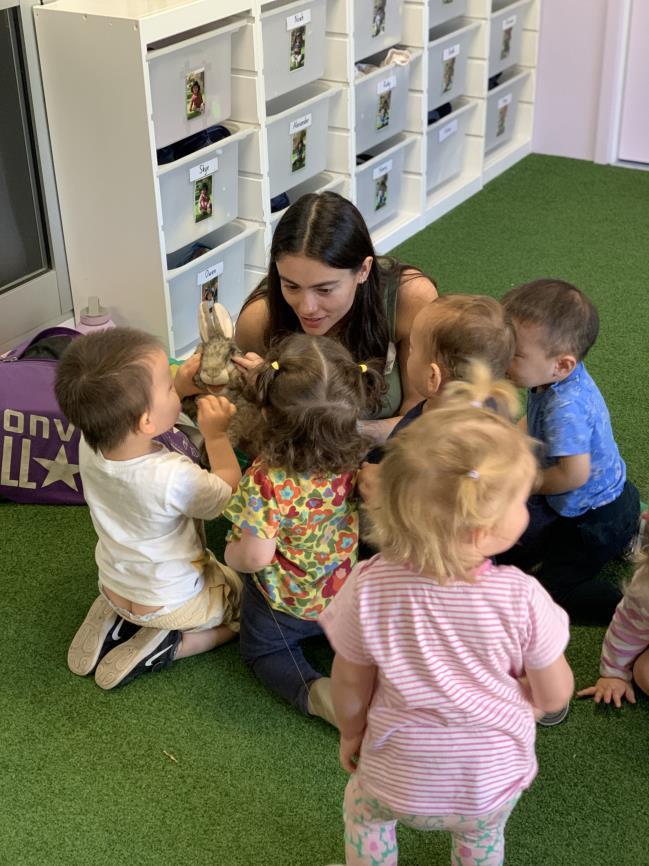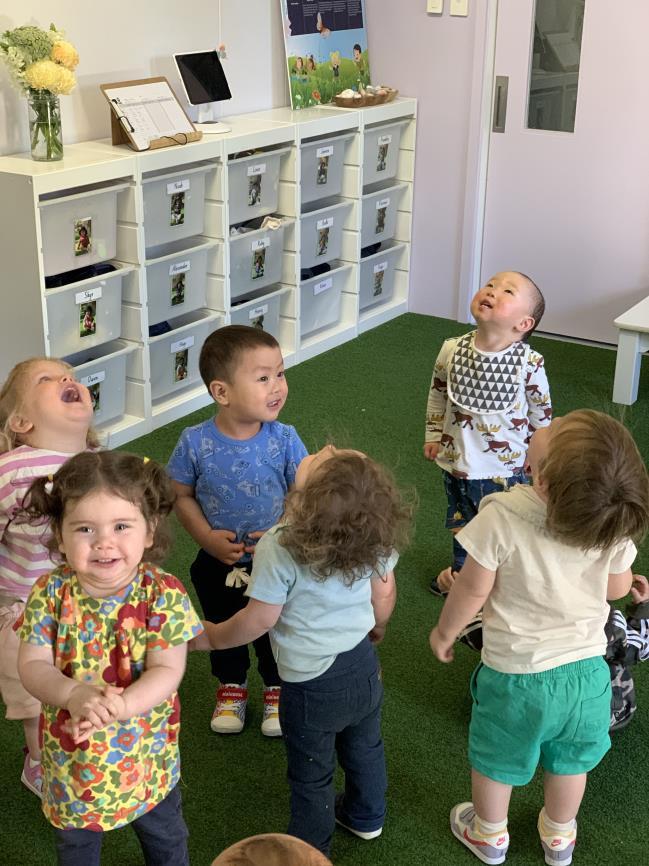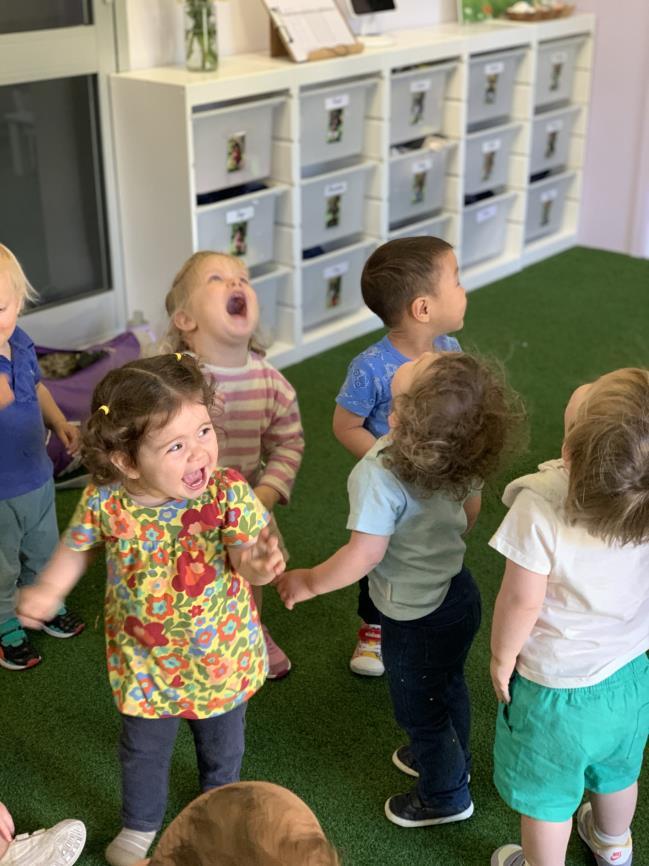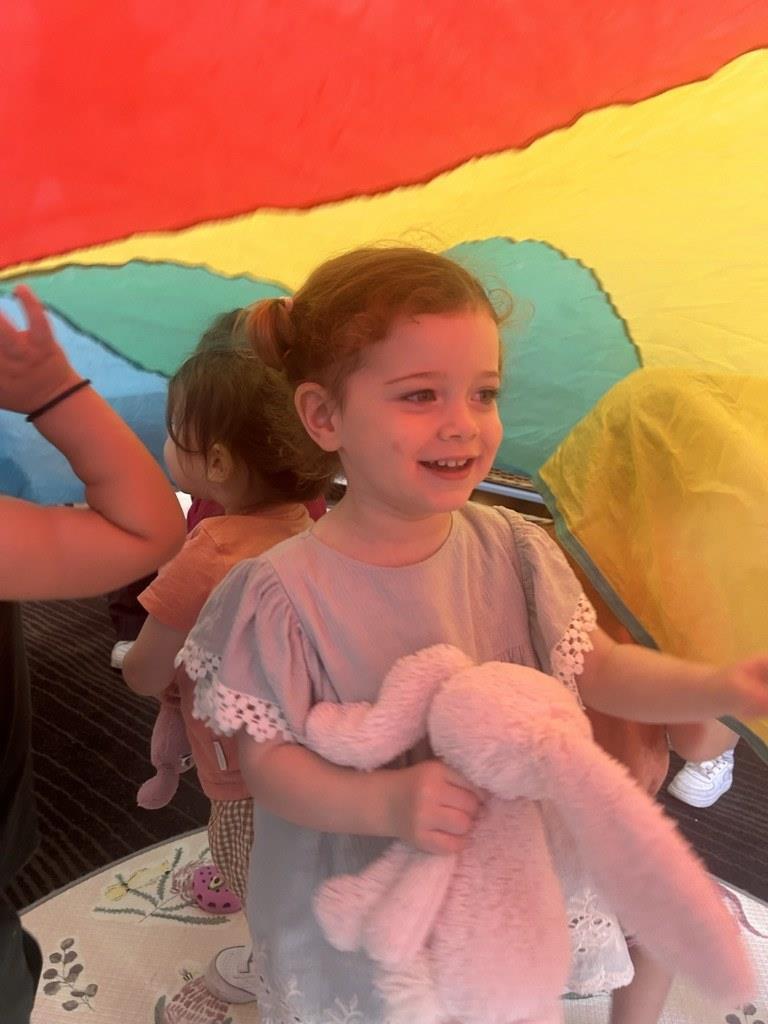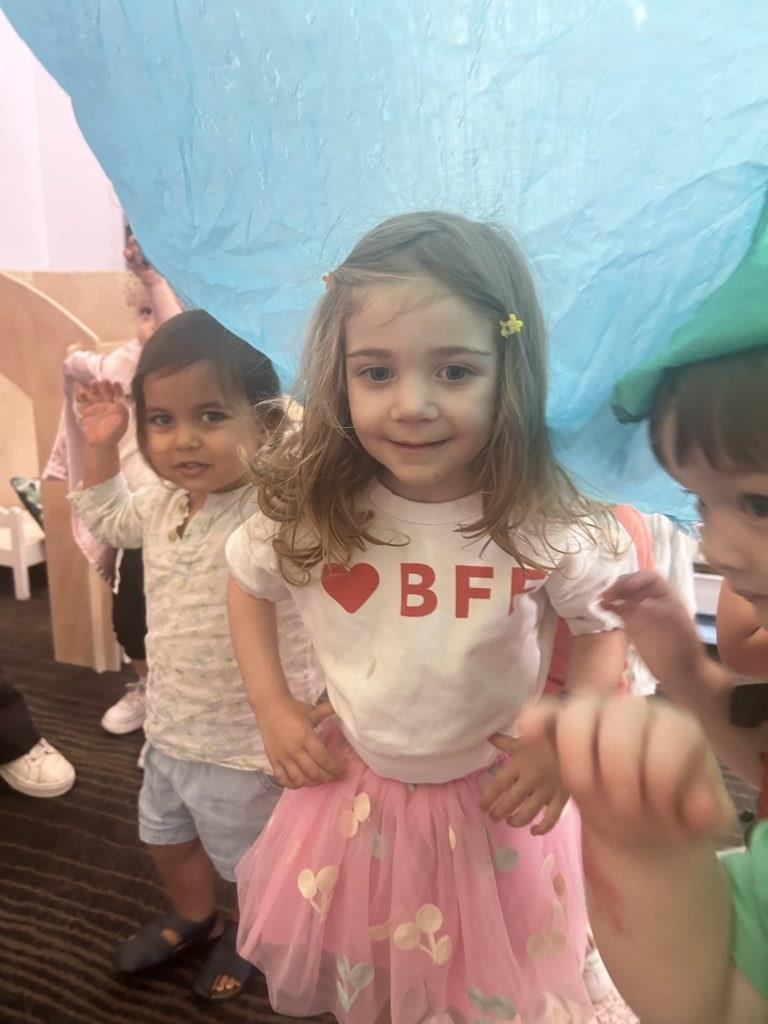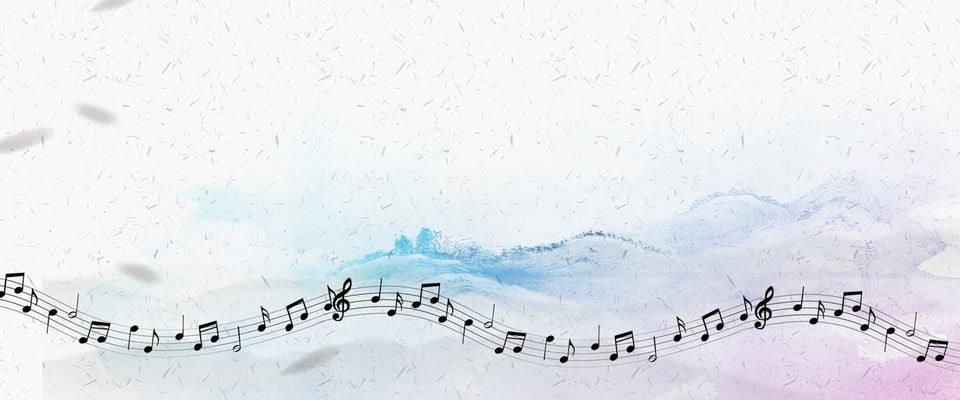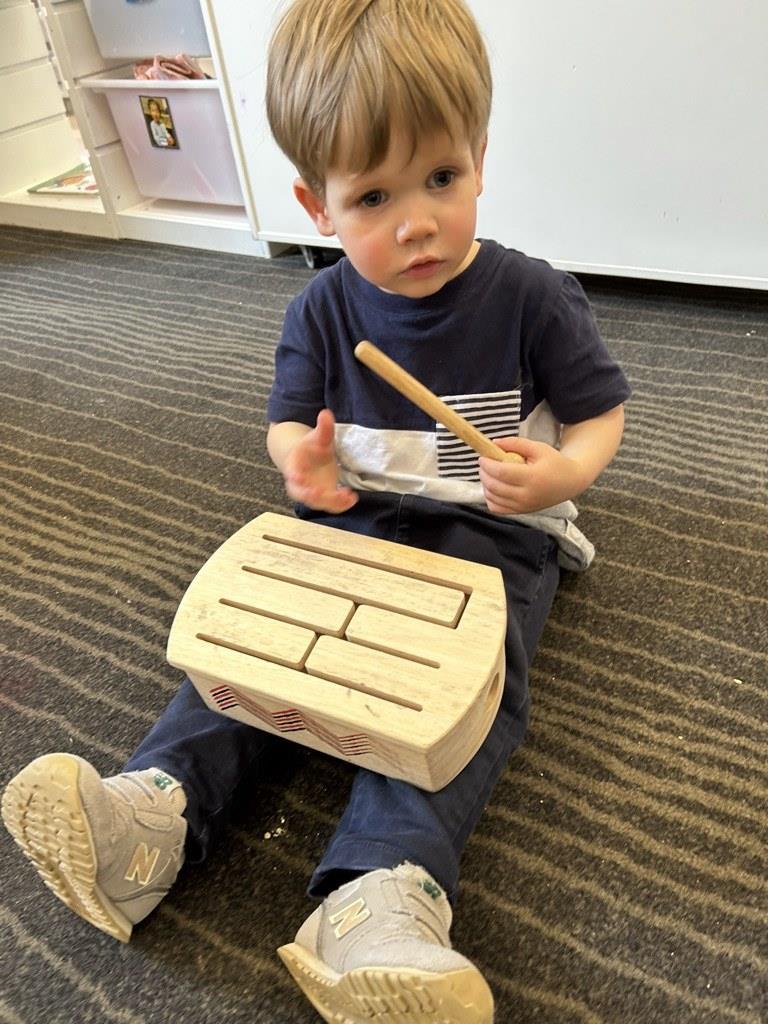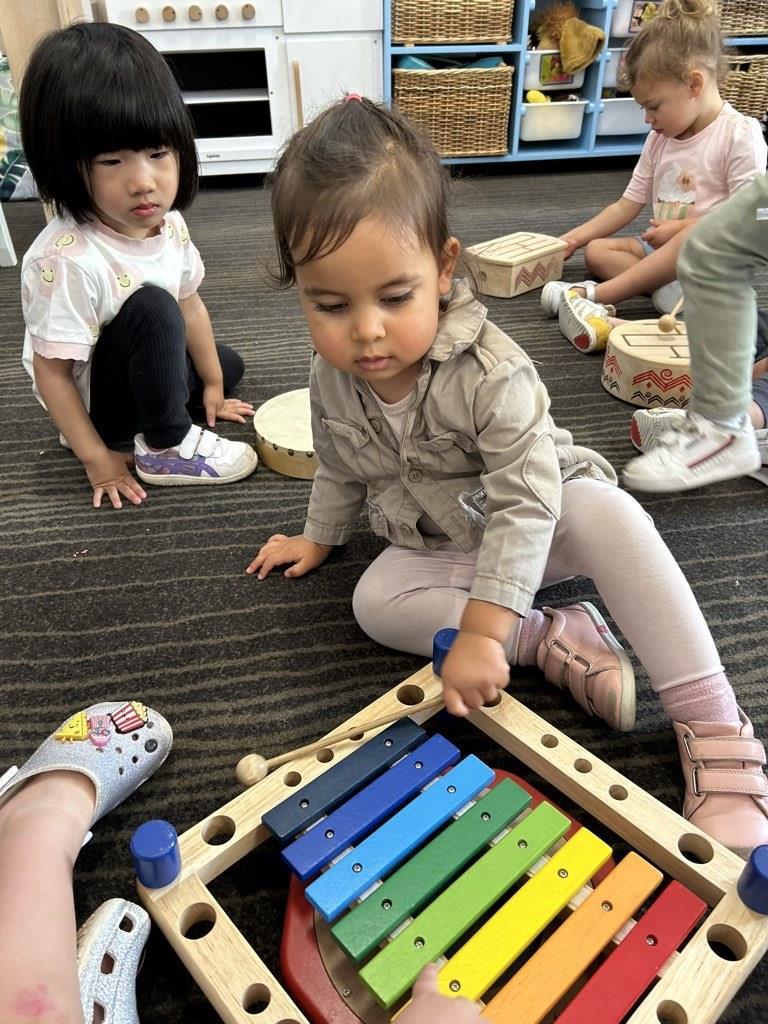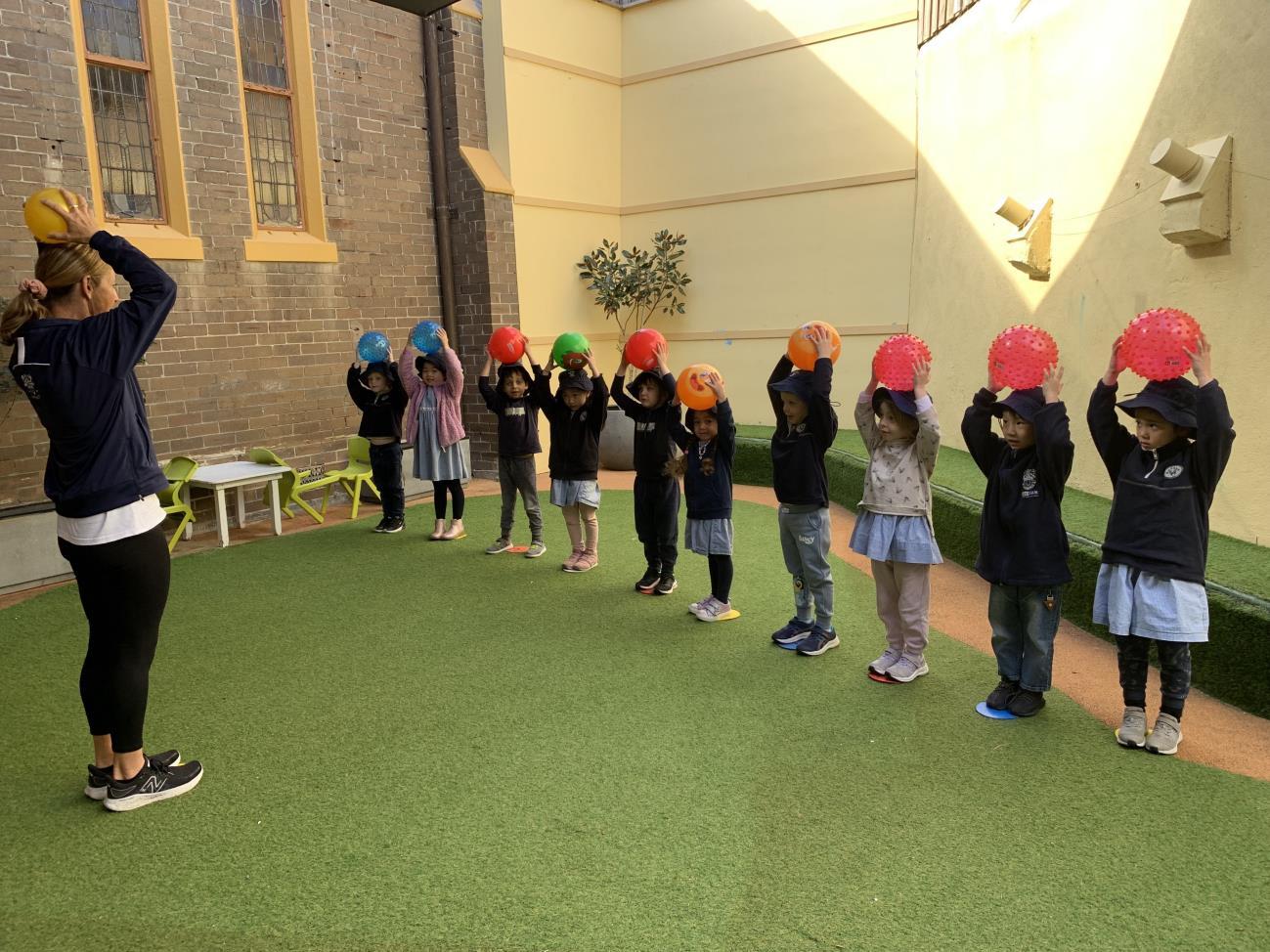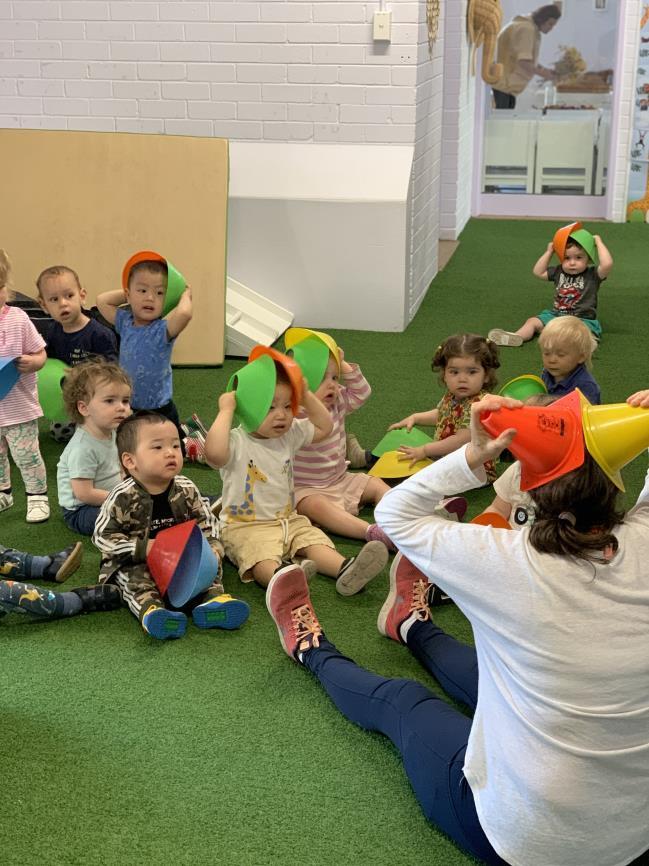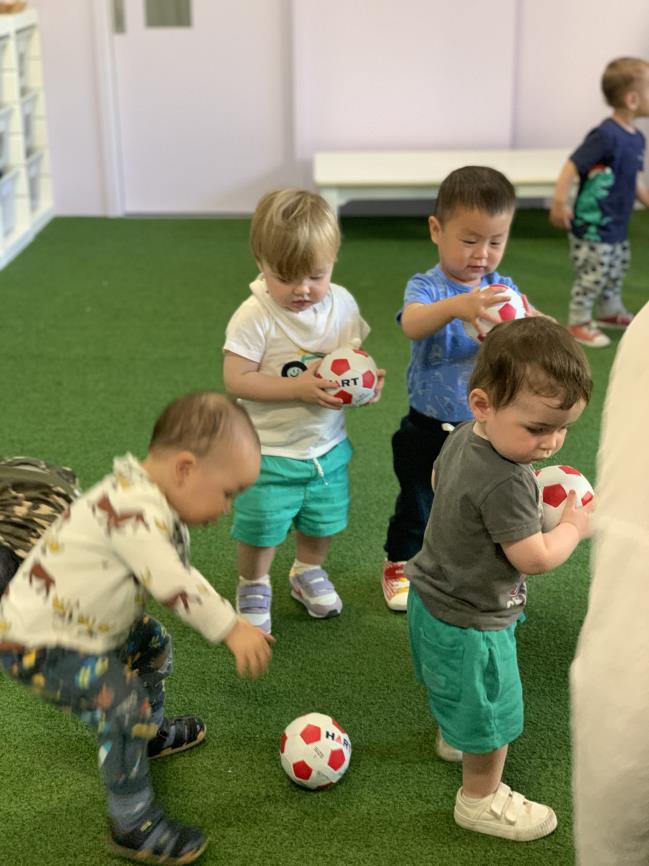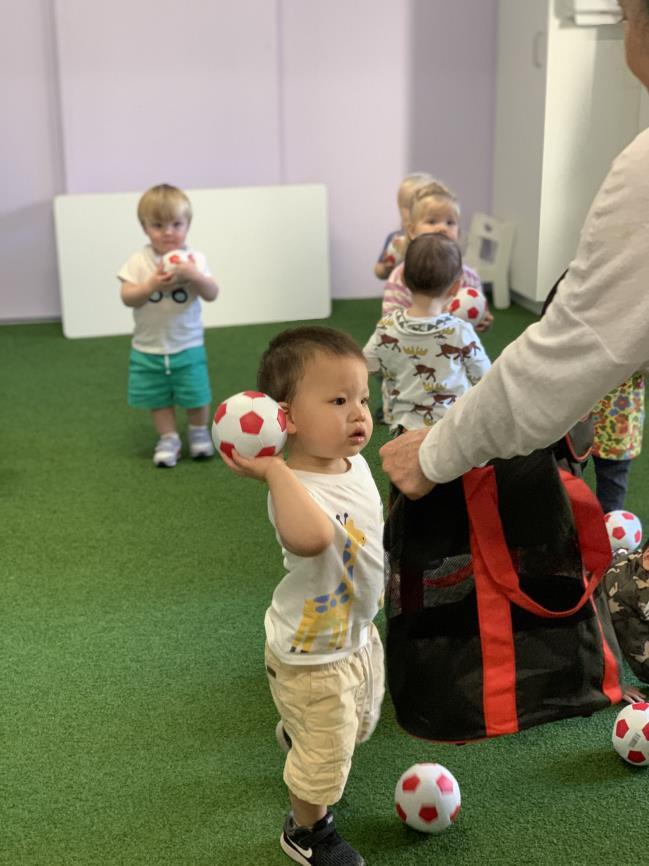Reddam ELS Woollahra Week 9
22 September 2023

Dear Parents and Caregivers,
Nowadays there seems to be a self-help book or online guide for just about every topic under the sun, and we all have access to a far greater variety of opinions and suggestions than ever before. This is no less so for parents and teachers, who are able to learn infinitely more than previous generations about how best to raise and educate their children.

One topic which has gained prominence in recent years is that of mental health, and, while we might avoid thinking too much of the idea when relating it to our children, there is much we can do from an early age to raise happy, well-adjusted children. One way we can do this is through introducing them to the concept of mindfulness, which is being incorporated into modern educational frameworks worldwide. In Australia, the Early Years Learning Framework recognises the importance of nurturing holistic development in young children, and mindfulness is emerging as a powerful tool in achieving this goal.
The EYLF places a strong emphasis on fostering children's social, emotional, cognitive, and physical development. It is based on the principle that early childhood is a crucial period for setting the foundation for lifelong learning, and as such the EYLF outlines key learning outcomes for children, with a particular focus on well-being, identity, communication, and learning.
Mindfulness involves paying deliberate attention to the present moment without judgment, and it aligns perfectly with the principles of the EYLF. It helps children to identify and manage their emotions effectively. By teaching them to observe their feelings without judgment, children learn to respond to challenging situations with calmness and self-control. It has been shown that children who are more mindful are better equipped to engage in classroom activities and absorb new information.
Mindfulness also fosters empathy and compassion, allowing children to develop strong interpersonal skills. They become more attuned to the emotions and needs of their peers, leading to healthier relationships. In addition, we need to remind ourselves that even young children can experience stress and anxiety. Mindfulness techniques provide them with tools to cope with these feelings, promoting mental well-being from an early age.
Mindfulness encourages self-reflection, helping children to build a strong sense of self and a positive self-identity, as emphasised in the EYLF. It equips children with resilience, enabling them to bounce back from setbacks and adapt to challenges, which is crucial for their future success. As our teachers engage with the children, they are constantly looking for ways to incorporate mindfulness exercises into their activities, trusting that these will help the children to become even more resilient, confident and content individuals.
My sincere thanks to all those who have contributed to the success of this past term. It truly has been a collaborative effort – all to the benefit of the children. Parents, caregivers, teachers, admin and support staff have combined wonderfully to create a warm and caring scaffolding around the children and for this we are all grateful.
For those who will manage to take a short break now, enjoy your time with family and friends. We look forward to seeing you again in two weeks’ time!
 Dee Pitcairn Principal Nest
Dee Pitcairn Principal Nest
As the weather warmed up for our last week of Term Three, this week before going outside we reminded the children about the importance of wearing sunscreen and wearing a hat and always keeping it on.
“No hat, no play”. Positive role modelling by wearing hats ourselves is critical to help the children see and understand the importance of sun safety. Applying sunscreen is also a part of our daily routine and has been very successful. The children are encouraged to use their emerging self-help skills and are encouraged to help rub their sunscreen in with assistance from a teacher when they are finished. It is so sweet to see the children watch and help each other.
We had a fun and creative project available this week for the children. The kids got sticky making a poster with the natural objects we painted last week and some old flowers. This unique and beautiful poster is displayed proudly in our classroom. Following on from this activity, we were inspired by the children's enthusiasm for the activity and the warm weather, so we used the left-over dried flowers and froze them. We added warm water and kitchen utensils for the children to enjoy.
Indoor and outdoor play are both important for children. During indoor play this week we saw imagination and creativity, while outdoors we soaked up the sunshine, which allowed for physical activity and exploration.
It is unbelievable to think that we have reached the end of Term Three already and what a fun and wonderful term it was. Each day in the Nest we feel a buzz of happy confident learners exploring the class activities with a string sense of “Autonomy, interdependence and agency” (EYLF 1.2) as we delve into a world of promoting independence and agency. It is clear to see that the children are incredibly happy to be a part of our group, which can be seen throughout the day as their little faces light up with contagious smiles because of their active engagement in learning and play. The children’s confidence can be seen growing each day. As they engage in their daily routine, the children feel comfortable and happy to play with each other, and we also see positive social interactions emerging.
We look forward to a fun-filled Holiday programme which commences next week.








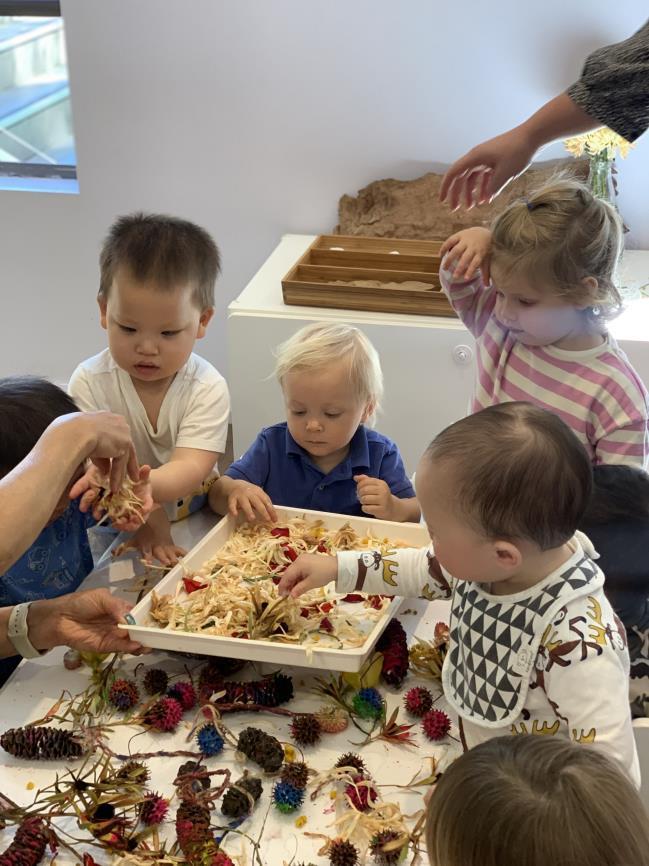




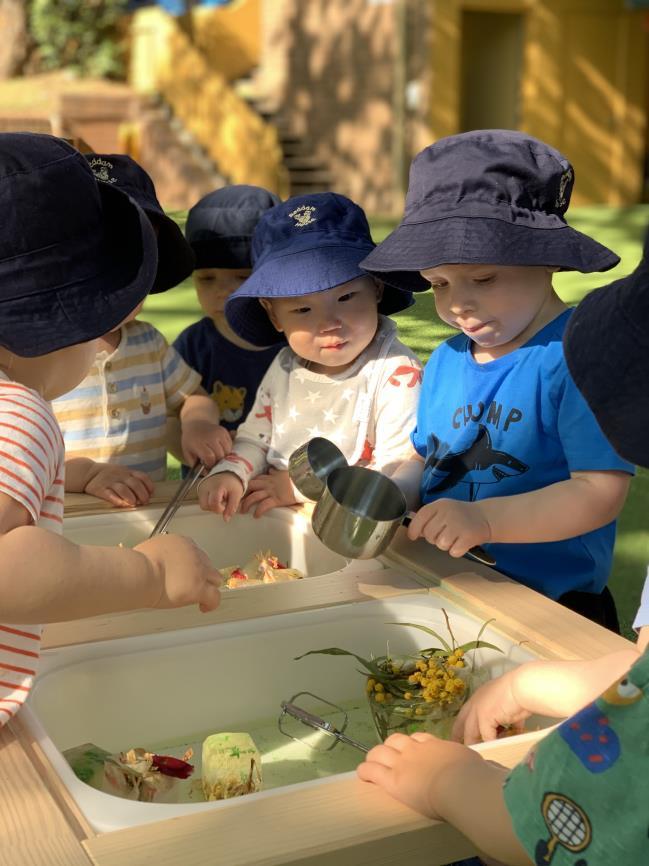











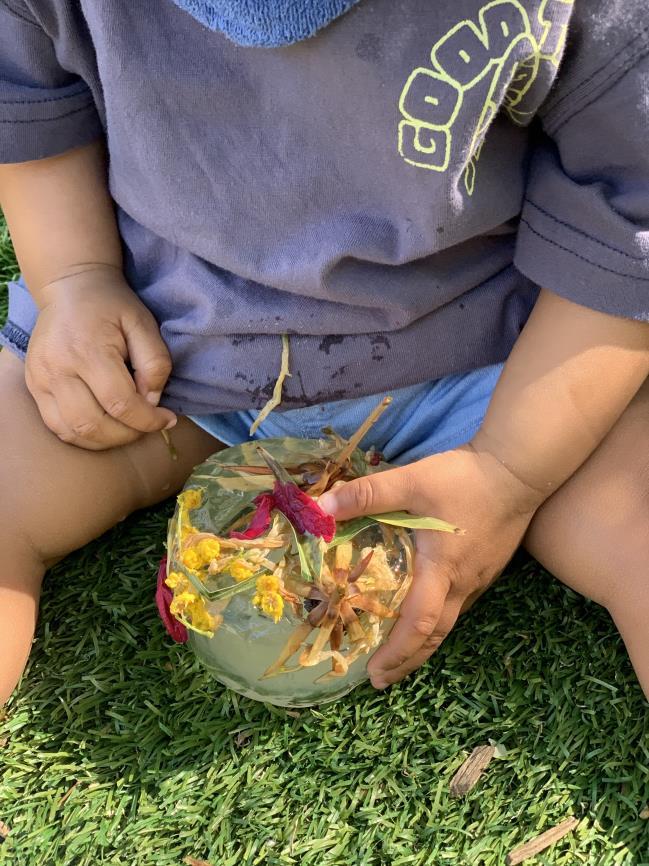


The weather was so warm this week, that we decided to add water paints to the Mini Atelier table. The children enjoyed dipping their brushes in the water and then choosing the colours to create their artwork. We continued having fun with water while playing on the deck, as we filled in buckets with water to play in the sand pit. But the best fun of all was using the hose to mist the water all around! The children were excited to see the rainbow forming in the water when looking against the sunlight!
At the Manipulative table, we had a tray with padlocks and keys and the children tried their best to fit the keys in each padlock to unlock it. The teachers supported the children’s efforts by helping them to count and find the correct key, so the biggest challenge in this experience was to use their fine motor skills to fit the key and turn it to open the padlock. Numeracy can be found in everyday routines and in simple experiences, just like this one. The Fledglings have always enjoyed exploring numbers as they

count with the teachers how many teachers are attending on that day, or when they can count how many steps from our classroom to the deck. We will continue to encourage this interest in Term 4.
Celebrating the end of Term Three, we combined all the latest interests displayed by the children, inviting them to make fruit jelly. First the children chopped blueberries, strawberries and bananas, placing them in their individual cup. Then we added the jelly, pouring it into the same cup.

Self-help skills has been a big thing in our group this term. Children are wanting to complete tasks independently and take their time to do so. When they were making their jelly, we gave each child a set with the resources they needed. Although children took this opportunity to taste the fruit as well, they persevered to chop and slice the fruit using the wooden knives, each child in their own time.
It is hard to believe that we have reached the last term of 2023. The Fledglings have already achieved so many important milestones this year and in Term Four we will continue to nurture, encourage and inspire the children to achieve many others.
Wishing everyone a great school holidays, whether at Reddam or with your families! We look forward to many other adventures in Term Four!
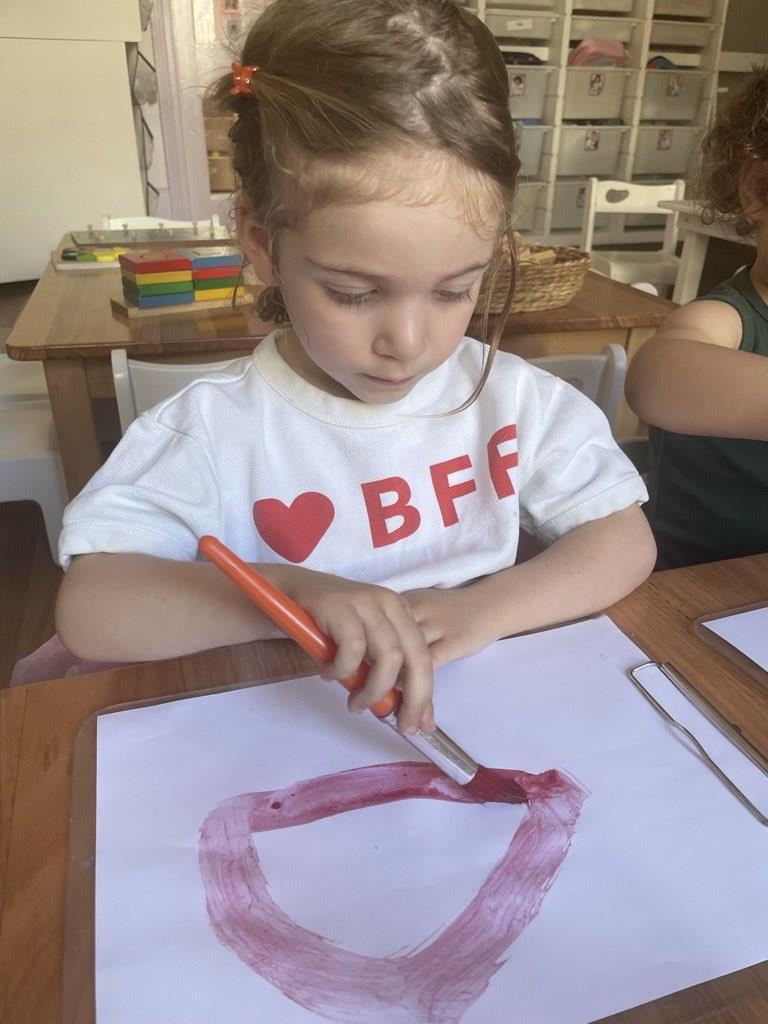


















Our Continuous Exploration of Nature

“Nature is a tool to get children to experience not just the wider world, but themselves.” – Stephen Moss.
The Tree Frogs children are demonstrating a daily interest in nature. Once we step outdoors, immediately we start our collection of leaves. This week, this enabled us to observe colours shapes, sizes and patterns presented in each element, co-constructing knowledge about diverse concepts involving this exploration. We wondered about what type of trees the leaves we found on the floor came from. These little pieces of nature were placed as elements in the children’s imaginative play, such as money for the ice cream shop, delicately choosing a special piece to place in their pockets, singing and making gestures with the leaves and decorating our light table. This gave them another observational perspective and allowed the children to create patterns or even use them as part of the scenery where they pretend play with the Australian animals. Throughout this learning, nature supported the children to keep developing a deeper sense of the world around them, expanding their attention to details, which
helps to expand vocabulary, creating opportunities for communicating with peers and creating connections with them.
Our observational skills were exercised within the arts as well. Children in Stage Two were provoked to observe a picture of nature and use it as an inspiration to create art. Whilst inspired by an image of nature, children were free to express and follow their artistic streak. Moreover, they were provoked to critically think about choosing one of the three images to inspire and accompany their own creative streak at that particular moment. Continuity of learning allowed the children to come back and make new choices of images and exercise diverse perspectives on nature.

Although the air quality kept us from going outside during some days last week, nature was still present in the way in which we portrayed art. We sat in small groups in our atelier and looked out the window, observing the nature available to us. We had conversations about the tree branches, the leaves, and the sky, aiming to inspire children to freely express their perspectives of nature using watercolours. This learning experience prompted the children to have meaningful discussions, which encouraged them to use complex vocabulary and concepts that deepens their artistic processes.
“The things children see are not just remembered; they form a part of their soul.”
-Maria Montessori

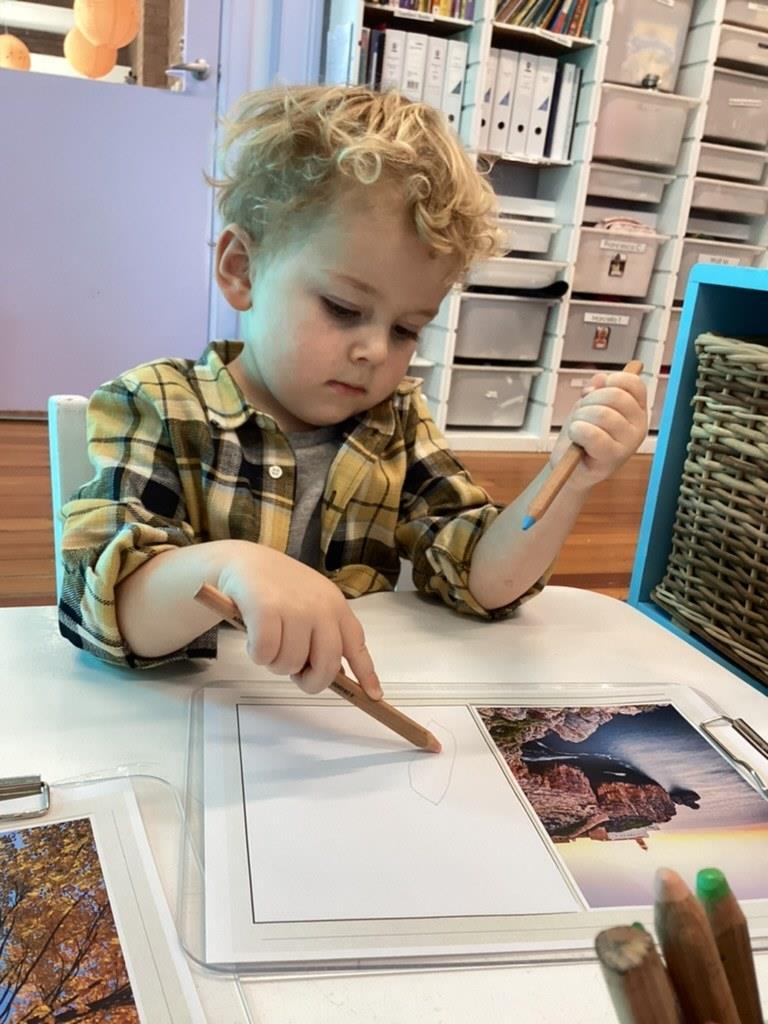


















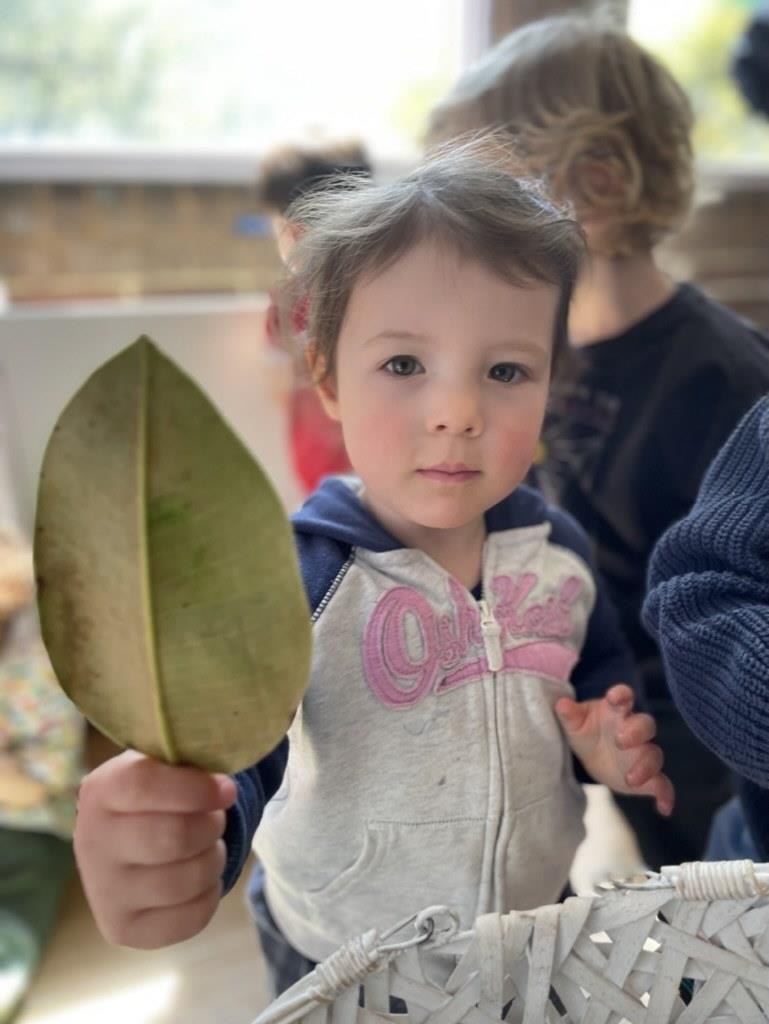

















This term we have been thinking about ways that we can show kindness to others. We have been reading stories to support this learning and having discussions around how different actions make us feel; for example, if someone shares with you, you might feel happy or if someone knocks down your tower, you might feel sad. The children have had many wonderful ideas about ways to be kind. We added their words to a tree in our room that has transformed into a kindness tree, to inspire others to be kind too.

“If somebody says kind words.” Sophie
“Giving food to people when they don’t have it.” Alfie
“Cleaning up for my dad.” Siena
“Helping is kind.” Darcy
“Do sweeping at home and play with friends.” Saxon
“Sharing toys.” Liam
“Give one cuddle and say I love you.” Winnie
“Building a castle with my friends.” Hugo
“You can play with each other.” Hana
This week, the focus of our learning moved from thinking about how we can be kind to each other, to thinking about how we can be kind to our environment. This shift in focus occurred one morning as we made our way inside from the playground. We were shocked to discover some rubbish left on the path! The children spoke about what we had seen all the way up the stairs, so when we got back to our room we sat together and had a discussion where they shared how they were feeling.
“Sad because people drop the rubbish, and I don’t like it!” Artie.
“Sad because that’s not taking care of the Gadigal land.” Sophie.
“Everyone needs to clean up nature.” Siena.
“Sad because there was rubbish on the floor.” Leonie.
“I be happy for to throw it in the bin.” Lyla.
“It makes me sad. You need to throw it in the bin – I don’t, I didn’t throw it on the floor.” Hana.
“That made me grumpy because the rubbish is in the wrong spot.” Alfie.
“We have to throw it in the bin.” Olivia.
“Naughty people, the rubbish man needs to get it.” Olivia.
“It be in the wrong place, it should be in the correct place.” Liam.
After our discussion we read the book ‘Sofia Valdez, Future Prez’, where we followed the story of Sofia, a young girl on a mission to clean up her town. In the book the children noticed Sofia making signs to ask people to help her to clean up, so they decided they wanted to make some signs of their own, and they practised writing the words, “Don’t forget your rubbish” and “Put your rubbish in the bin”
All year the children have shown a love for nature as they collect leaves and branches in the playground and treat them like treasures. Children who love nature are more likely to protect it. They made the connection between caring for nature and cleaning up after themselves, as Sophie pointed out, leaving rubbish on the ground is not how we take care of the Gadigal land we are on. Alfie told us to protect something means “you keep something safe”, and we are going to explore ways we can care for and protect our environment over the next while. The children have been developing their sense of belonging to this school community as the year has gone on. Children’s connection and contribution to their world is built on the idea they can exert agency in ways that make a difference and build a foundation for civic and democratic participation. (EYLF, Outcome 2). Together we will explore
environmental sustainability where the children will learn what we can do to make a difference in our school community, and then later in our wider community.





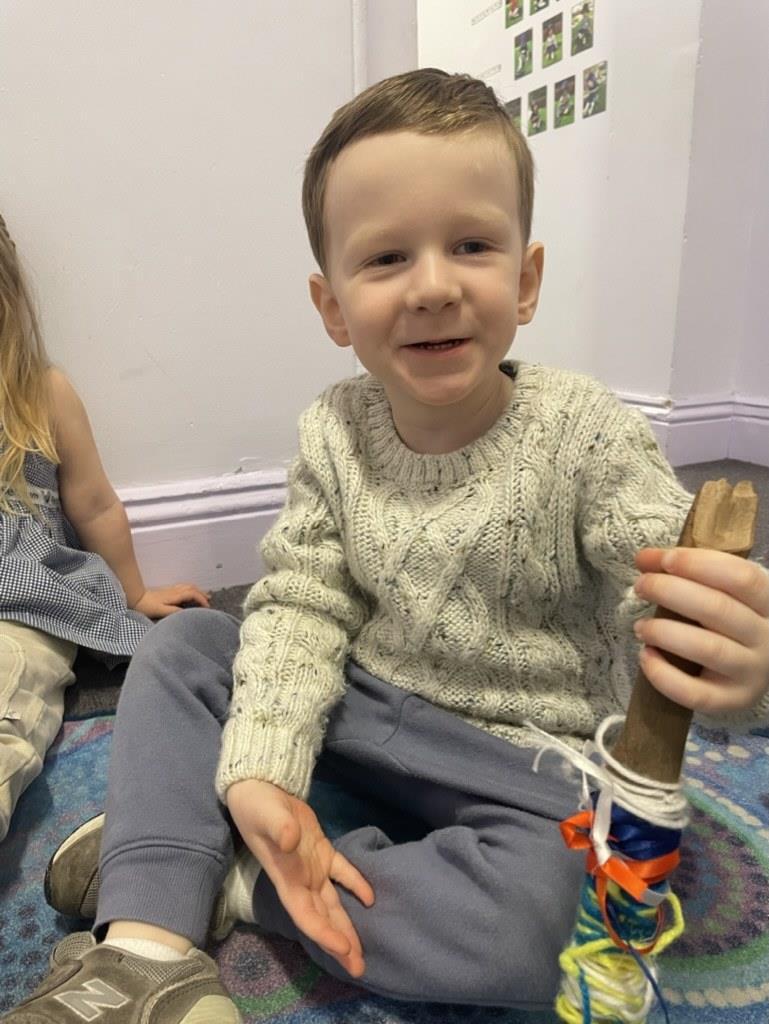




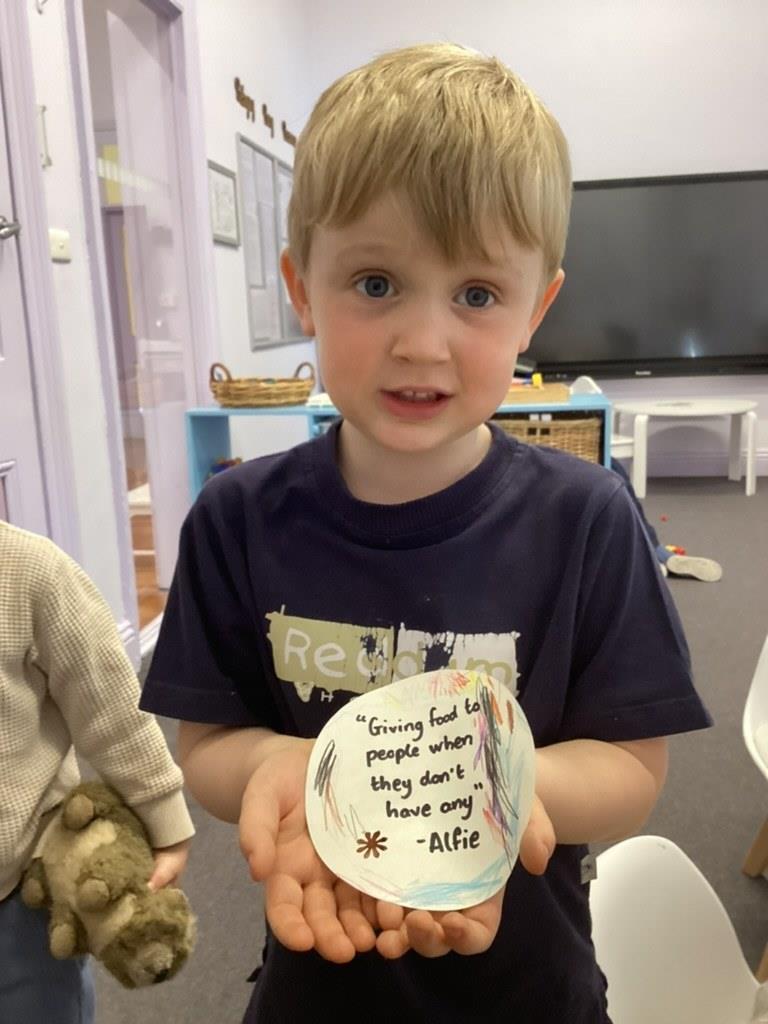


The past weeks have been nothing short of magical in the 4R class as the children embarked on a journey of scientific creativity, diving headfirst into the mesmerizing world of colour mixing.
Creative Science Experience: The Magic of Colour Mixing
The children enthusiastically delved into a creative science experience. experimenting with coloured water glass pots, water droppers and primary colours to leave vibrant marks on fine paper. This engaged them in learning about colour mixing. symmetry. cause and effect as well as enhancing their fine motor skills and artistic self-expression.
As the children created their art, their comments included:
Sarah, 'Pretty Flower." Thomas, "I aimed for Sunflower." Lucas, “Butterfly.” Leanne, "Rainbow." Leo, "Flower.” Phoebe, "Rainbow.' Mia, "Love hearts." Hannah, “Rainbow colours.” Julian, “I see a flower.”

Eliyanah, “Wow. look look! they are mixing!" Alyssa, “It's rainbows everywhere. I love rainbows.” Valentine, "Lots and lots of colours fill my page now.”
This science through art created the perfect backdrop for the children to practise their name writing as well as those of their peers. To accompany their name practice, the children requested to draw miniature drawings of themselves and much-loved peers in their Stage 4R Class.
Through this, they achieved EYLF Outcome 4.1(Children develop dispositions for learning, such as curiosity, cooperation, confidence, creativity, commitment, enthusiasm, persistence, imagination and reflexivity). They also gave their artwork meaningful titles, fostering language and communication skills. (EYLF outcome 5.1).
We are delighted to announce that our Science Art project is now on display in the piazza, ready to be celebrated with the ELS Reddam Community.
Continuing the Creative Science Journey
Building on last week's creative science experience, this week the children had the exciting opportunity to experiment with flowers and food dye colours. As they watched the magic unfold, they shared their thoughts and ideas with us. Their comments reveal their boundless curiosity and enthusiasm:
Leo: "I mixed the orange colour. It is wet. It is almost changing colours."
Mia: "I am making colours."
Phoebe: "I am putting paint on the flower to make a rainbow."
Valentine: "My idea is mixing up two colours and seeing the colour change. I need blue."
Leanne: "I'll make a rainbow flower."
Lucas: "I want to make it sparkly and put it in my water and bring it home to see if it goes rose."
Thomas: "I want to change the colour. I hope it goes green after night. I want to take it home."
Sarah: "I have an idea, Yuliya. Put colour on the flower and leave it overnight, and it will turn a different colour."
It's heartwarming to witness our children's curiosity, creativity, and excitement for learning in action. We can't wait to see where their inquisitive minds will take them next!
R
OK? DAY, We Are Here to Hear…
In our nurturing environment, we place a strong emphasis on encouraging our children to look out for their peers by acknowledging their emotions and asking the simple yet powerful question, "R U OK?”
Our children engaged in a range of enriching activities aimed at fostering their holistic development and offering valuable learning experiences.
We introduced the concept of emotions through captivating stories like ‘Colour Monster’ and ‘Today I Feel’, thereby promoting vital social and emotional growth.
The children had the opportunity to express themselves creatively by crafting their own colour monsters, exchanging heartfelt compliments while drawing each other, and, in the process, enhancing their selfawareness and emotional literacy.
Our children exchanged heartfelt compliments while drawing each other, such as: “I love you” ; “I want to marry you because you say hello to me in the morning” ; “I like it when you go to drawing class with me in my car” ; “I love your drawing” , “I like you because you are kind.”
Extending on the beautiful feelings and emotions concepts raised in our Monday-Wednesday class, our Thursday and Friday class delved deeper into the important message of ‘R U OK?’ and what we can do to help our friends, parents, siblings, family and even teachers when they may not be feeling okay.
We had friends adding to the Feelings monster display, we had friends viewing storybooks on feelings and we also came together to watch a short dance clip of a school that dressed up in yellow and created a DANCE with some important messages. The children adored this song and jumped up onto their feet, wanting to learn the actions and words immediately!
































